
 The concepts of integration, complementarity and coordination are particularly important especially in the field of railway infrastructures. The requirements of the associated interventions are very technical in nature and involve multiple specialties and technologies, and the final result is only guaranteed if the various components of this interwoven puzzle are compatible and properly joined together.
The concepts of integration, complementarity and coordination are particularly important especially in the field of railway infrastructures. The requirements of the associated interventions are very technical in nature and involve multiple specialties and technologies, and the final result is only guaranteed if the various components of this interwoven puzzle are compatible and properly joined together.
Introduction
Ferbritas SA was founded in 1976. Over more than three decades of existence has undergone many changes arising from processes of development and growth, which contributed significantly to the technical independence of the national railway, through the systematic and progressive development of skills in several areas of specialty. Ferbritas is currently dedicated to the transport sector and in particular the railway (light, heavy, conventional and high speed).
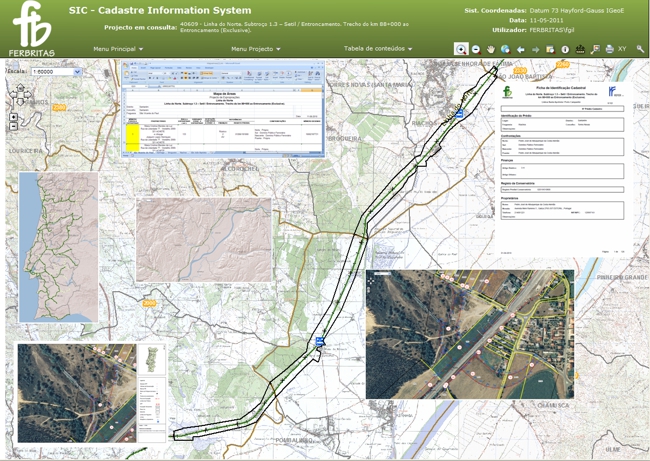 Fig. 1 – Central Module Overview
Fig. 1 – Central Module Overview
It is the only national company in the areas of consulting and engineering projects, which has competence in all Railway areas and specialties, which gives particular vocation for the comprehensive management and integrated projects and undertakings of this nature and enables the provision of services related to transport planning, feasibility studies and project detail; expropriations; quality control materials, specialized management and supervision of construction works.
The concepts of integration, complementarity and coordination are particularly important especially in the field of railway infrastructures. The requirements of the associated interventions are very technical in nature and involve multiple specialties and technologies, and the final result is only guaranteed if the various components of this interwoven puzzle are compatible and properly joined together.
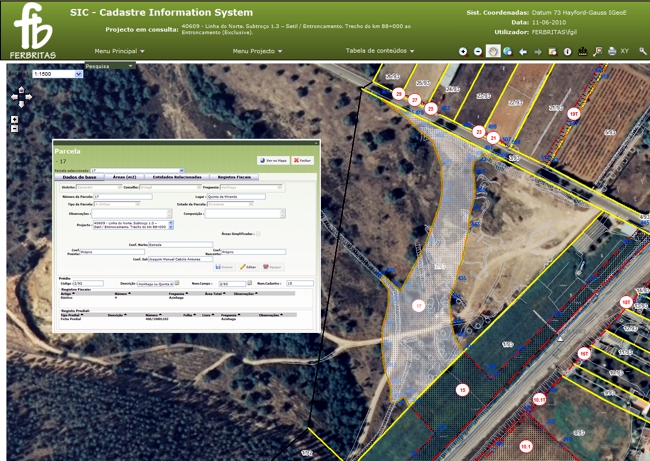 Fig. 2 – Central Module Parcel View
Fig. 2 – Central Module Parcel View
Rail lifecycle
Moreover, linear infrastructures such as roads, rail, energy, etc. are long lasting, and with long lifecycles. Starting at the planning stage, these infrastructures can last for several decades, during which information is produced by multiple generations and organizations, running the risk of not being used at present, or future, or even get lost in time, if not properly organized and maintained. The resulting information and knowledge have high economic value and significance for organizations, making it vital to preserve.
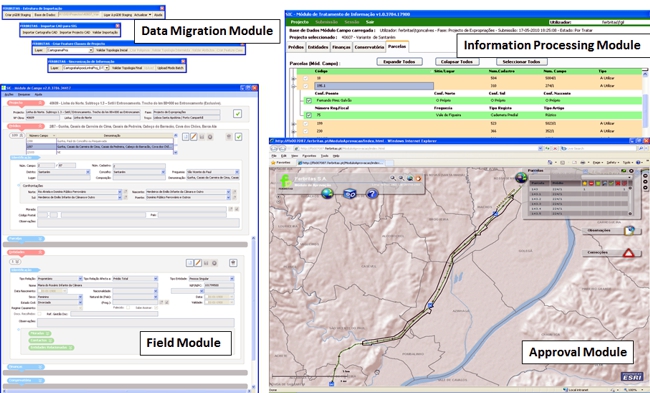 Fig. 3 – FBSIC Main Modules
Fig. 3 – FBSIC Main Modules
Although the immediate reason for the development of this information system stems from the need to provide a complete answer to the dynamic control of the registration and real estate status of the national rail infrastructure, the results obtained are of relevance to individuals, companies and public administration.
Land asset management is a cross cutting societal topic which is the basis for many economic and control activities. This results as very important since the opportunity and return on investment on, for instances, ownership transfers, land use and taxation cannot be based on inadequate or wrong information.
For these reasons, from the beginning, the Cadastre Information System (FBSIC) was designed to meet the needs of the rail sector and beyond. It also is applicable to the activities of entities or organizations to which it is important to ensure the dynamic control of cadastral and real estate property. The terrain, the cadastral and real estate control.
Processes
The processes of mobilization of land for infrastructures of public and private domain are developed according to proper legal frameworks and systematically confronted with the impoverished national situation as regards the cadastral identification and regularization, which leads to big inefficiencies, sometimes with very negative impact to the overall effectiveness.
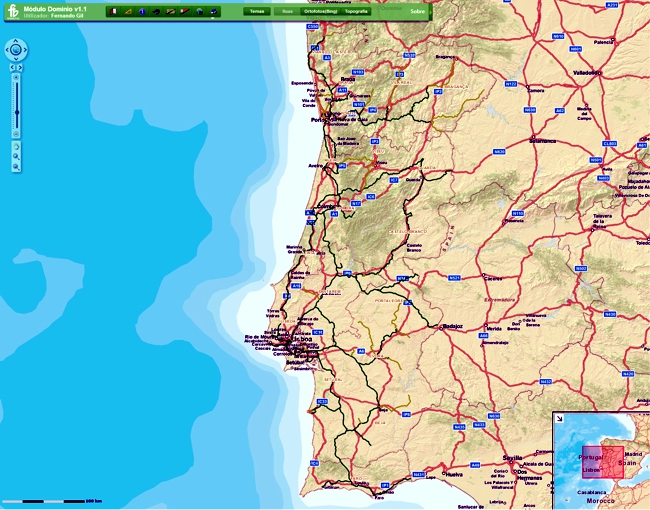 Fig. 4 – Public Domain Management Module (Initial Page)
Fig. 4 – Public Domain Management Module (Initial Page)
The process started with collecting and processing information from the “foundations” and continues building up the collection of valuable information that the company already has that got; seeking its immediate availability to the customer and all specialties of internal needs and also permits its use for other purposes such as asset appreciation. Adopt a geographic information technology and develop the required software, properly integrated with other information subsystems of the organization, focused on the production and business management.
First we proceed to update the design of the technical and business processes, then the objectives were detailed and the technological platform selected, which were the preconditions to start the project. From this point, the implementation process followed a standard design with the establishment of requirements, functional analysis, application design and related developments.
Tools for rail integration
| Application Server: ○ Hardware: ■VM (VMware) with 8GB of RAM ○ Operating System: ■Windows Server 2008 R2 Std x64, IIS 7.5 (compatible 6) ; ○ GIS: ■ArcGIS Server 10 Enterprise Standard (ArcSDE 10); ■ArcGIS Image Server 10. ○ Web Application: ■Developed in C # (Web Application Developer Framework for the Microsoft. NET Framework -. NET Web ADF ) / JavaScript, MS Visual Studio 2008, framework v4 |
Database Server: ○ Hardware: ■VM (VMware) with 8GB of RAM; ○ Operating System: ■Windows Server 2008 R2 STD x64; ○ Database: ■SQL Server Enterprise 2008 x64 SP1; ○ FBSIC Applications: ■Geographic Migration Module: ArcGIS Extensions (ArcObjects); ■Field Module: Windows Forms; ■Information Processing Module: Windows Forms; ■Central Module: Adobe Flex; ■BackOffice Module: Site Aspx; ■Approval Module: Adobe Flex; ■Public Domain Management Module: Adobe Flex |
Desktop ArcGIS: ○ ArcInfo and ArcEditor 10; ○ ArcView 10 (single use), ○ Spatial Analyst 10 competitor, ○ 3D Analyst 10, ○ Network Analyst 10; ○ ArcGIS Data Interoperability 10; ○ ArcGIS Publisher; ○ ArcPad 10. ● ArcGIS Server 10: ○ ArcGIS Server 10 Enterprise Standard; ○ ArcGIS Image Server 10. |
Project implementation
Initially a prototype was developed to support better decisions on the system to implement. In the next stage, we proceed with the implementation of the Cadastre Information System (FBSIC). The project team was designed to adequately cover the needs of business and is therefore composed of elements from the functional units that have the “know-how” of the business, coordinated by the GIS team and supported by an information systems team, with the direct involvement of the first level of management. Another condition, that is also essential to promoting the integration of internal and external resources, is performing the work at the premises of Ferbritas.
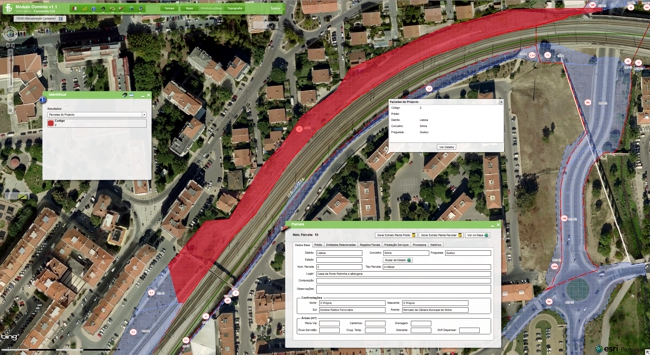 Fig. 5 – Public Domain Management Module (Querying a Land Parcel)
Fig. 5 – Public Domain Management Module (Querying a Land Parcel)
Cadastre Information System (FBSIC) is a first step of a business strategy that has multiple purposes, particularly related to increased value for customers and for the reference shareholder, with the efficiency of services, information integrity, the generation and the “democratization” of knowledge in a timeless framework.
The SIC is used permanently for three areas of business and has allowed to formulate new innovative services, and respond to the needs expressed by clients. They are metrics established that have confirmed the efficiency gains and significant rigor established in pilot projects developed in the testing phase and will be confirmed after the entry into production at cruising speed.
Benefits of the project
The FBSIC is supported by a scalable architecture, standards-based information technology and communication, and interoperability, ensuring a high sustainability of long-term application. Allows viewing and editing of geographic and alphanumeric information of expropriation projects. Has a modular character, comprising:
● Data Migration Module (geographic and alphanumeric), with some features for element
validation;
● Field Module (supporting the activities of gathering information);
● Information Processing Module (import and validation of field data);
● Central Module (which provides tools that enable: load and edit information on a
geographical, alphanumeric and document basis, monitor the quality of the project phases
and their transitions (workflow); print maps and formal documents, among other features);
● Backoffice Module to support the system administrator;
● Approval Module (enables to perform a cycle of approval of the design data before sending to
DUP);
● Public Domain Management Module (enables to perform the management cycle of land
parcels till their acquisition by the national authorities);
The benefits are evident at the level of operational efficiency, with including tools that enable process integration and standardization of procedures, facilitate analysis and quality control and maximize performance in the acquisition, maintenance and management of registration information and expropriation (expropriation projects). The implemented system achieves levels of robustness, comprehensiveness, openness, scalability and reliability suitable for a structural platform.
Results
FBSIC tools, in conjunction with other applications for Registration and Expropriation Projects, allow managing the entire life-cycle of projects of expropriation and cadastre, including support to field activities with the integration of information collected in the field, the development of multi-criteria analysis information and monitoring of projects in the exploration stage.
The integrative nature of the architecture allows Ferbritas fit current needs, providing the possibility of scaling the platform to meet future services. The application has increased the rigor and productivity of the cadastre and expropriation process, and represents to the company a solution to information management of Cadastre and Expropriation Projects, including all other additional background information.
———————————————————————–
Fernando Gil and Luís Mata – Ferbritas, S.A., Lisbon, Portugal
e-mail: [email protected]